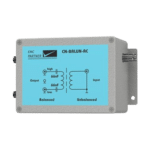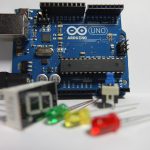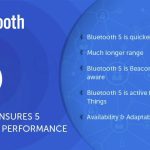
Introduction
The automotive industry is consistently undergoing a significant transformation, driven by the relentless pursuit of enhanced efficiency, safety, and performance. At the heart of this evolution are advanced vehicle control solutions, which are increasingly relying on sophisticated sensor technologies. Among these, linear position sensors stand out for their critical role in enhancing vehicle dynamics, safety systems, and user experience. This article covers the pivotal role of linear position sensors in advanced vehicle control solutions, highlighting their popular types, benefits, and future trends.
Introduction to Linear Position Sensors
Linear position sensors are versatile electromechanical devices specifically designed to measure the position (linear movement) of an object along a linear path. They convert mechanical motion into an electrical signal, which a control system can process to determine the position of the object. These sensors come in various technologies and are significant in monitoring and controlling real-time adjustments within multiple applications, critical for vehicle control services to industrial machinery. It utilises different sensing technologies, including resistive, capacitive, inductive, magnetic, and optical principles, to detect accurate changes in position, making them indispensable in various industrial automation processes.
Most Popular Types of Linear Position Sensors
There are several types of linear position sensors, each with its own set of characteristics and suited for different applications, such as:
Potentiometric Sensors
These sensors utilise a resistive track and a sliding contact to measure the linear position. They are simple, cost-effective, and widely used in automotive applications for their direct analog output.
Inductive Sensors
Inductive sensors, including Linear Variable Differential Transformers (LVDTs), use the principle of induction to measure displacement. They offer high accuracy and robustness and are ideal for harsh environments.
Magnetostrictive Sensors
Magnetostrictive sensors provide highly accurate and absolute position measurements. They work by detecting the interaction between magnetic fields and are particularly useful in applications requiring precision and reliability.
Hall Effect Sensors
Hall effect sensors measure the distance of a magnetic object using the Hall effect principle. They are contactless, durable, and suitable for applications where wear and tear of mechanical parts is a concern.
Benefits of Using Linear Position Sensors in Vehicle Controls
Linear position sensors play a crucial role in the automotive industry, enhancing the functionality, safety, and efficiency of vehicle controls. These sensors provide precise and continuous feedback on the position of various components, enabling advanced control systems to optimise performance. Integrating position sensors into vehicle control systems offers several benefits, including:
- Enhanced Safety: Linear position sensors are integral to safety systems, measuring the position of brake components and suspension systems. These sensors help maintain vehicle stability under various driving conditions, improving safety by reducing the risk of accidents.
- Increased Efficiency: By providing exact positions of pistons, valves, and other components, linear position sensors improve fuel efficiency and reduce emissions.
- Improved Performance: Customisable control over suspension, transmission, and steering systems enhances vehicle performance and driver experience.
- Durability and Reliability: Designed to withstand harsh conditions such as high temperatures, vibration, and moisture, linear position sensors ensure consistent performance over the vehicle’s lifespan. This reliability is crucial for critical systems where failure can lead to safety issues.
Significance of Position Sensors in Advanced Vehicle Controls
These sensors are integral to several vehicle control systems, enhancing performance, safety, and user experience in various ways, including:
Role in Vehicle Dynamics
Linear position sensor’s enhance vehicle dynamics––the way a vehicle behaves and responds to various forces when in motion. These sensors are integral components in modern automotive systems, contributing significantly in multiple ways:
Suspension Systems
One of the most critical applications of linear position sensors in vehicles is the suspension system. By continuously monitoring the suspension’s linear movement, these sensors provide real-time data to the vehicle’s control system. This information is then used to adjust the damping and spring rates dynamically, enhancing the vehicle’s handling, comfort, and safety.
Transmission Systems
In transmission systems, linear position sensors ensure smooth gear shifts and optimise performance. They monitor the position of the shifting forks and the clutch, providing precise control over the transmission mechanism, resulting in improved fuel efficiency, reduced emissions, and better driving experience.
Enhancing Safety Systems
Linear position sensors enhance safety systems in automotive advanced control systems by providing precise and real-time feedback on the position of equipment, components, and machinery. Here’s how they contribute to safety systems:
Stability Control
They are integral to advanced stability control systems. By measuring the linear movements of various components, such as the steering column or brake pedal, these sensors provide vital data in detecting and correcting skids or loss of control. This significantly enhances the vehicle’s safety in adverse driving conditions.
Adaptive Headlights
Adaptive headlights, which adjust the direction and range of the vehicle’s headlights based on speed, steering angle, and elevation, rely on these sensors. These sensors ensure the headlights provide optimal illumination, improving visibility and safety during night driving or in poor weather conditions.
Improving User Experience
Linear position sensors also enhance user experience in many ways, such as:
Adjustable Seating and Mirrors
It finds extensive use in providing personalised comfort through adjustable seating and mirrors. They enable the precise and automatic adjustment of seats and mirrors based on the driver’s preferences, stored in the vehicle’s memory. This not only enhances comfort but also ensures that the vehicle’s controls are within optimal reach, contributing to safer driving.
Infotainment Systems
In infotainment systems, these sensors facilitate the smooth operation of sliding or rotating controls, enhancing the user interface’s intuitiveness and responsiveness. This improves the overall user experience by making it more enjoyable to interact with the vehicle’s infotainment options.
Future Trends of Vehicle Control Systems Using Advanced Linear Position Sensors
The future of vehicle control systems with these sensors is promising, with trends focusing on increased integration, connectivity, and intelligence. Some of the bright future iterations of these sensors include:
- Smart Sensors: Development of sensors with built-in processing capabilities for more sophisticated and autonomous control systems.
- IoT Integration: Integration with the IoT for enhanced vehicle diagnostics, maintenance, and user interaction.
- Electrification and Automation: As vehicles become more electric and autonomous, the role of linear position sensors in providing precise control and feedback will become even more critical.
Final Thoughts
Linear position sensors are indispensable components in modern vehicle control systems, enabling precise monitoring and adjustment of various parameters. By providing accurate and real-time data on multiple vehicle dynamics and functions, these sensors enhance the efficiency, safety, and comfort of modern vehicles. As the industry continues to innovate, the applications of these sensors are expected to expand, further integrating these essential devices into the fabric of automotive technology.





















